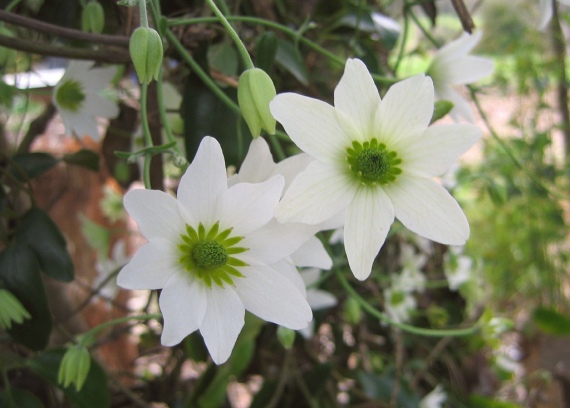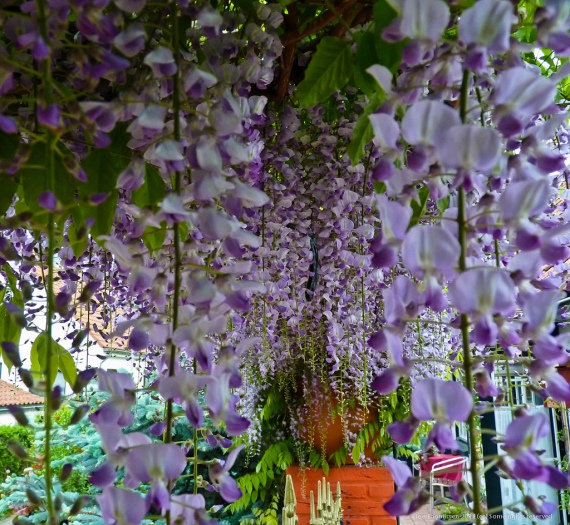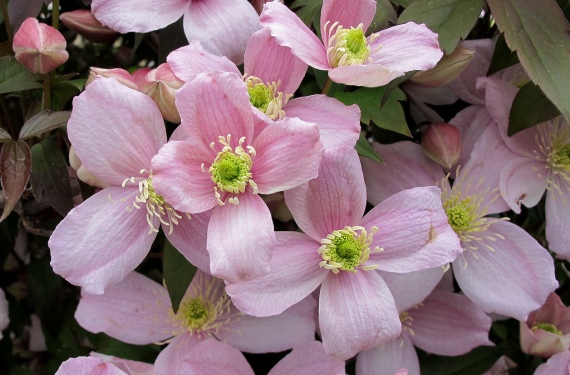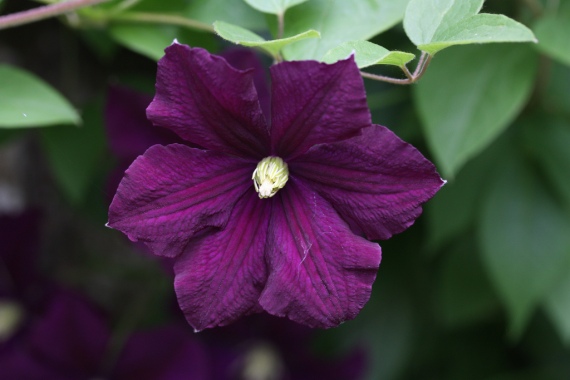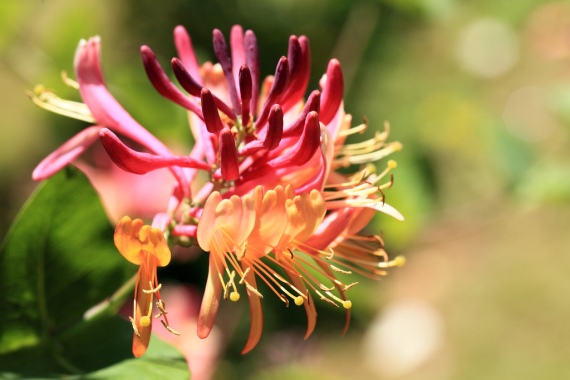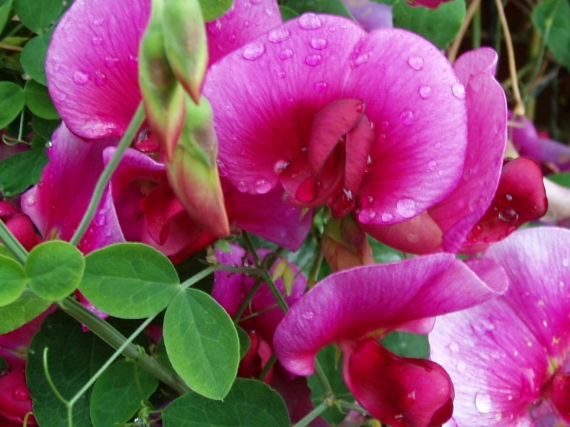Climbing plants are an essential feature of every garden and they can be used to transform a wall, trellis or fence.
Alternatively, you can grow climbing plants through other plants, especially shrub varieties that flower early in the season. A climbing plant can add that extra colour later in the year.
As well as growing climbing plants simply for the flowers, berries or autumn colour, you can use them to disguise an unsightly oil tank, to screen dustbins or to conceal some other unattractive feature.
Planting
Climbing plants will grow for many years so it is essential to prepare the soil well before planting. Dig organic matter deeply into the surrounding soil. Dig the hole deeper and wider than necessary and break up the bottom of the hole. Add some organic matter and lightly fork it into the bottom.
When planting close to a wall it is necessary that the plant is at least 30cm away from it, or even a little more. This is because the soil at the base of a wall is often very dry. For the same reason, if you are growing the plant through a bush or tree plant it away from the trunk.
When planting a climber, make certain that the level of the soil around the plant stem is the same as it was when the plant was in its container. An exception to this rule is clematis, which should always be planted 3-7cms deeper.
Training and Pruning
Fan young shoots out so that they cover a wide area rather than make a single column. Then tie them into the support if necessary. The amount of pruning required will vary with the plant, from none at all to cutting almost to the ground each year, as with some clematis. Seek advice when purchasing as to the individual climbing plant’s pruning requirements.
Tying
The best way of tying the plant to its support is to form a figure-of-eight with the string, crossing it over between the plant and the support. Tie the knot at the back of the support if possible or at the side.
Wall Supports
Climbing plants are useful for softening the walls of a house or for concealing an eyesore such as a garage or oil tank. In some cases it may be necessary to construct a trellis or screen. In others, the plants can be attached directly to a wall.
- If the wall has to be painted regularly, use a trellis fixed to a frame. Attach this with hinges at the bottom so that it can be eased away from the wall without breaking the climber, allowing the wall to be painted. Use rotating blocks at the top to hold it in place.
- A more permanent method is to attach horizontal wires to the wall. These can be fixed with vine eyes which are hammered into the wall so that the eye is about an inch from the surface. A tensioning screw at one end will keep the wire taut.
- A less common method is to use wall ties. Special nails with a lead strip attached to the head. The nail is hammered in next to the shoot and the strip wrapped around it. A simple method is to use strips of canvas or plastic doubled around the shoot and then nailed to the wall.
Freestanding Supports for Climbing Plants
Today, there is a wide range of supports which can be used for growing climbing plants. Many of these are decorative features in their own right. Whatever method you decide on, it is essential that the support is properly anchored, making sure it is firmly in the ground. A climbing plant in full leaf will act as a sail and the wind blowing on it can exert tremendous pressure.
- Freestanding trellis panels, pergolas, arches and arbours can all be clothed with climbing plants. When calculating widths of arches etc, always allow for the thickness of the plants that will be grown up the sides.
Climbers can be divided into these four groups based on their time of flowering or growth habit:
- Early flowering:
Clematis Montana ‘Rubens Clematis Alpina ‘Frankie’
- Summer flowering:
Jasminum officionale Wisteria senensis
- Late flowering:
Clematis vitcellas Clematis texensis
- Foliage:
Hedera colchica ‘Sulphur Heart Parthenocissus
tricuspidata ‘Veitchii’
- Climbing plants can be grown through trees, shrubs and even other climbers. Clematis is one of the most popular climbers for this. Take care when using climbing plants which are too rampant, like Russian vine, which would otherwise swamp and even kill its host.
- Fences can be brightened up with climbers. They can be tied directly to a wire fence but with a boarded fence panel you will need to attach wires. Nailing wire or plastic netting to the fence gives plenty of fixing positions.
- Temporary or more permanent supports can be made from wigwams of poles, canes or pea sticks. Annuals such as sweet pea can be grown through pea sticks and then the whole lot discarded in the winter.
Bord Bia It’s Garden Time
With thanks to Bord Bia for this article. For more information on Bord Bia and for further gardening tips and advice, visit http://www.bordbia.ie/consumer/gardening/itsgardentime/pages/gardentips.aspx
